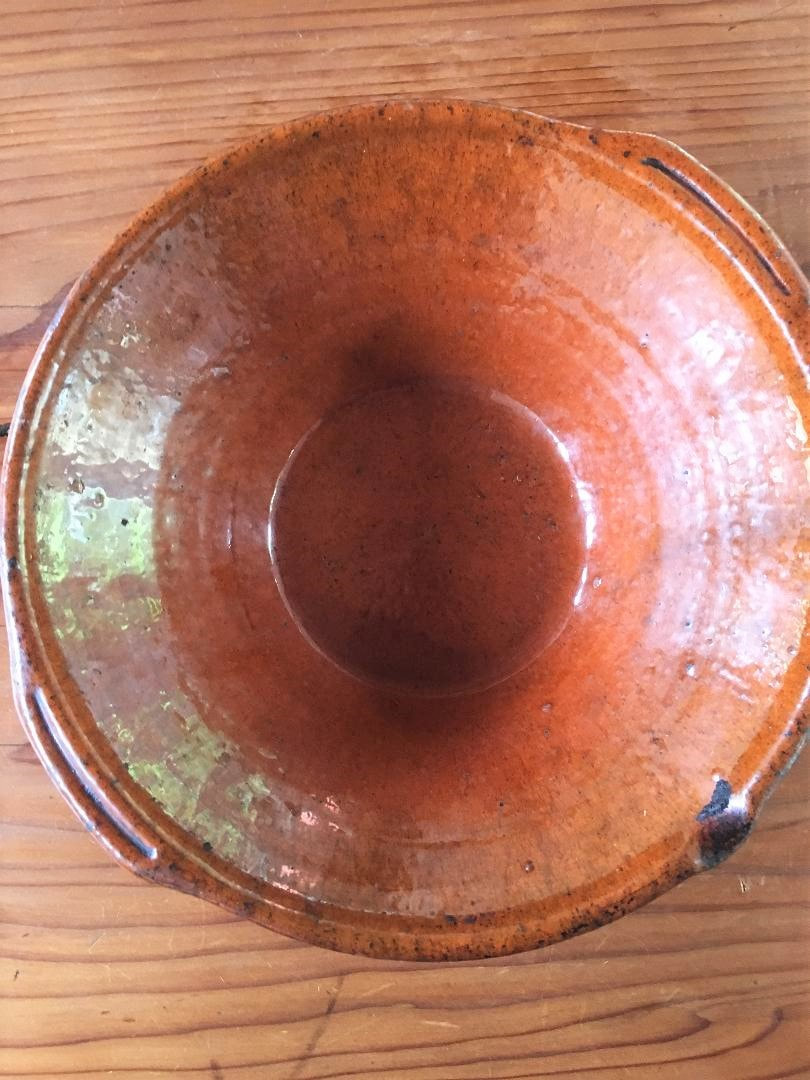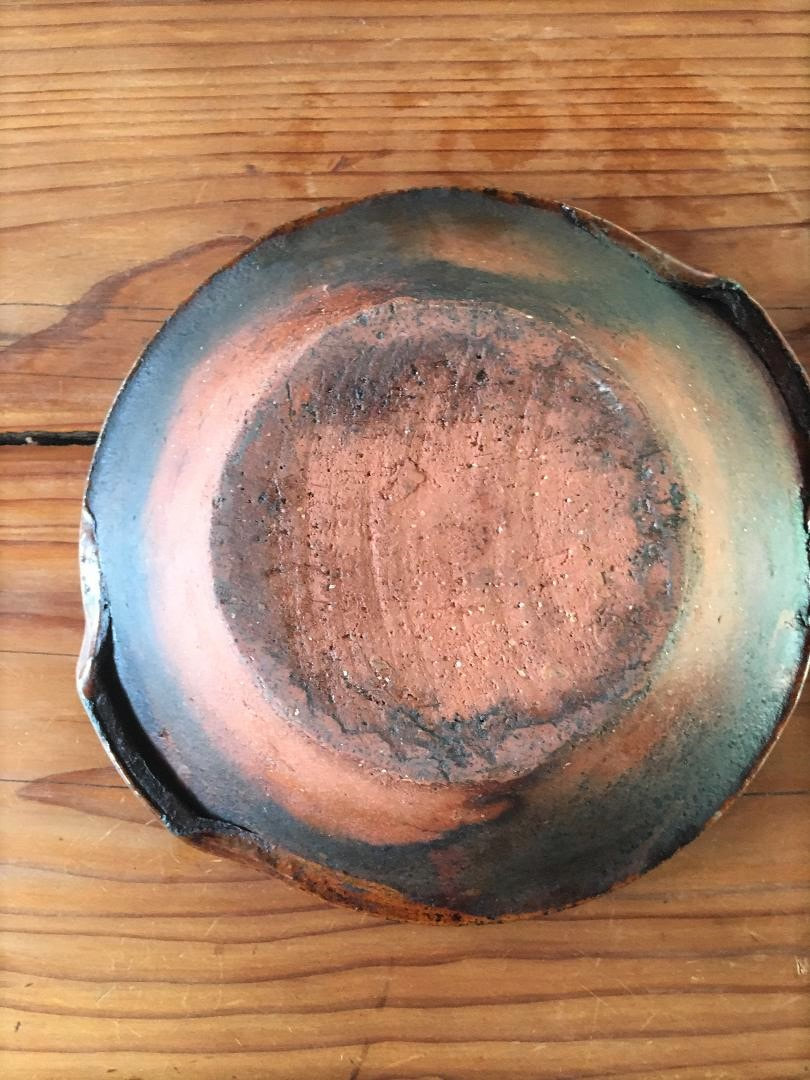By Andrea Blum ( @myamericanpantry ), Montalvo Culinary Artist
A traditional cassole , glazed on the inside (left) and burnt on the outside (right).
Some tools of the trade stay with you all your life. While traveling in France almost 20 years ago, I acquired a ceramic dish that as has become part of my quiver for cooking. It’s known as a cassole , a traditional earthenware dish where one cooks a cassoulet. The outside of the dish is rough and still burnt from the firing, while the inside is glazed smooth. It’s a piece of earth I cherish like an heirloom jewel.
It was gifted to me by the owner of one of the best-known restaurants in Castelnaudary, the epicenter for a traditional cassoulet. I went to that town specifically to eat the best. I asked people on the street, shop owners, and anyone I saw to point me in the right direction as I drove through town. Which included getting lost. I soon found the place I was looking for, at dusk when the outdoor lights of the garden turned on. I sat outside with my companion and indulged in a session of eating this rich bean dish laced with pork and duck that had been cooked for hours. By the end of the meal, I couldn’t move, yet I was so satisfied. The owner and I chatted on how I would manage. I told him why I was there. And that finding the perfect cassoulet was my goal. He told me to sit for an hour and then I would be fine. In the meantime, could he borrow my six foot tall boyfriend to change some lightbulbs? “Of course” I said in my comatose state as I was trying to hold myself together.
It was gifted to me by the owner of one of the best-known restaurants in Castelnaudary, the epicenter for a traditional cassoulet. I went to that town specifically to eat the best. I asked people on the street, shop owners, and anyone I saw to point me in the right direction as I drove through town. Which included getting lost. I soon found the place I was looking for, at dusk when the outdoor lights of the garden turned on. I sat outside with my companion and indulged in a session of eating this rich bean dish laced with pork and duck that had been cooked for hours. By the end of the meal, I couldn’t move, yet I was so satisfied. The owner and I chatted on how I would manage. I told him why I was there. And that finding the perfect cassoulet was my goal. He told me to sit for an hour and then I would be fine. In the meantime, could he borrow my six foot tall boyfriend to change some lightbulbs? “Of course” I said in my comatose state as I was trying to hold myself together.





I use the dish often to cook all kinds of things, especially in the wood oven at the Lucas Artists Residency. Last week, I used it for a California-style cassoulet. I used a little less fat and a few things that would not be considered traditional, but it was rich and comforting nonetheless. I used chicken sausages, pancetta, leeks and duck with cannellini beans instead of the traditional tarbais beans. What’s satisfying for me is that my cassole can last a lifetime and express the flavors and experiences I tasted so long ago.
“This is even better the next day!” one artist said the next day when we ate the leftovers for lunch.
“This is even better the next day!” one artist said the next day when we ate the leftovers for lunch.



